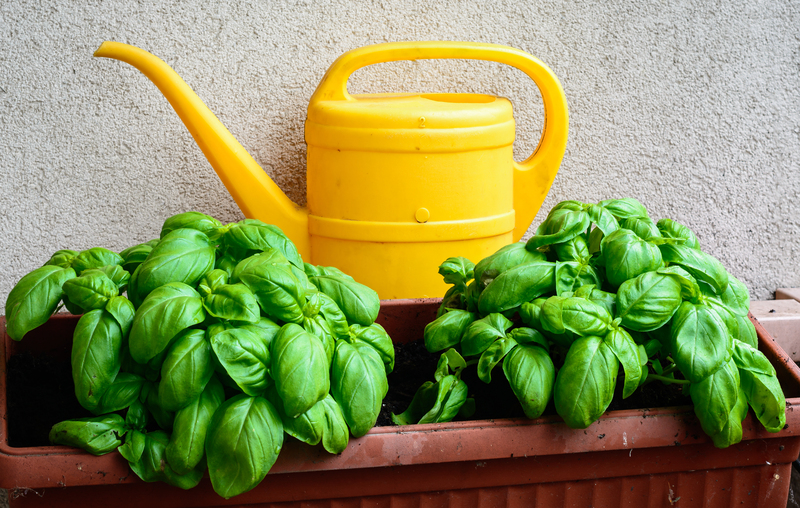Optimal Pruning Times for Various Shrubs & Trees
Posted on 09/06/2025
Pruning is a crucial gardening task that helps promote healthy growth, enhances the appearance, and prevents the spread of disease among shrubs and trees. However, knowing the optimal pruning times for various plants can be a bit of a puzzle. This article aims to provide you with the essential knowledge to effectively prune your shrubs and trees, ensuring they remain healthy and look their best year-round.
Understanding the Importance of Pruning
Pruning is not just about cutting off branches; it is about maintaining the overall health and aesthetics of your plants. Here are some of the primary reasons why pruning is important:
- Promotes new growth
- Improves air circulation
- Prevents disease
- Shapes the plant
- Removes dead or damaged branches

General Pruning Guidelines
Before diving into the specific pruning times for different shrubs and trees, it's important to understand some general guidelines that apply to most pruning tasks:
1. Always use sharp, clean tools to make clean cuts and avoid spreading disease.
2. Prune on a dry day to reduce the likelihood of disease transmission.
3. Make cuts at a slight angle to prevent water from collecting on the cut surface.
4. Avoid heavy pruning during active growth seasons.
Optimal Pruning Times for Deciduous Trees
Deciduous trees are those that shed their leaves annually. The best times to prune these trees are during their dormant periods:
- Late Winter/Early Spring: This is the ideal time for most deciduous trees. Pruning during dormancy promotes vigorous new growth in the spring.
- Summer: Light pruning can be done in the summer, but be cautious not to remove too much foliage as it can stress the tree.
Some specific examples include:
- Maple Trees: Prune in late winter or early spring.
- Oak Trees: Best pruned in mid to late winter.
- Birch Trees: Late winter or early spring.
Optimal Pruning Times for Evergreen Trees
Evergreen trees retain their foliage year-round, and the timing of pruning can vary:
- Early Spring: Just before new growth begins is a good time for most evergreen trees.
- Late Summer/Early Fall: Light pruning can be done to shape the tree or remove dead branches.
For specific examples:
- Pine Trees: Late spring is ideal.
- Spruce Trees: Early spring or late summer.
Optimal Pruning Times for Flowering Shrubs
Pruning flowering shrubs at the right time ensures that you do not cut off the flower buds, leading to a lack of blooms in the next season. Here are some general guidelines:
- Spring-Flowering Shrubs: Prune immediately after they finish blooming. This allows you to shape the plant without cutting off next year's flower buds.
- Summer-Flowering Shrubs: Prune in late winter or early spring before the new growth begins.
Specific examples include:
- Lilacs: Prune just after flowering in the spring.
- Hydrangeas: Depends on the type, but usually late winter for stem hydrangeas and after flowering for others.
- Roses: Typically late winter or early spring before new growth.
Tips for Effective Pruning
1. Always sterilize your pruning tools before and after use to prevent the spread of disease.
2. Make sure to prune back to a bud or branch to avoid leaving stubs that can become entry points for disease.
3. Remove any crossing branches to reduce the risk of rubbing and subsequent injury.
4. Start by removing any dead, diseased, or damaged branches before shaping the plant.
Pros and Cons of Pruning
Pros:
- Enhances plant health by removing diseased or dead branches
- Stimulates new growth and flowering
- Improves air circulation and sunlight penetration
- Shapes plants for a better appearance
Cons:
- If done incorrectly, it can stress the plant
- Risk of spreading disease if tools are not sanitized
- Over-pruning can weaken the plant

Takeaways
- Prune deciduous trees during their dormant periods, mainly in late winter or early spring.
- Evergreen trees can be pruned in early spring or late summer.
- Flowering shrubs should be pruned based on their blooming times; either just after flowering or in late winter/early spring.
Conclusion
Pruning is an essential gardening task that, when done correctly, can significantly enhance the health and appearance of your shrubs and trees. By understanding the optimal pruning times for various plants, you can ensure that your garden remains vibrant and healthy. Remember to follow general pruning guidelines, use the right tools, and sanitize them properly to avoid spreading diseases. Happy gardening!



